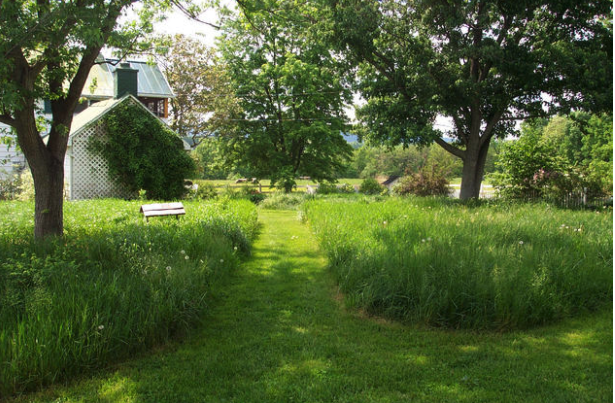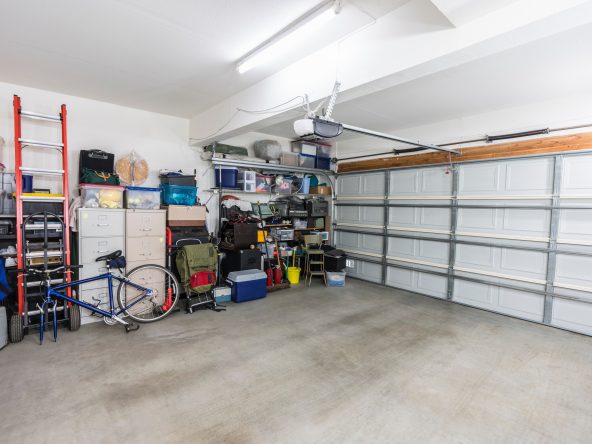Photo courtesy of nrdc.org
You Ask, We Answer: What Are Some Alternatives to a Grass Lawn?
With the first shoots of spring popping through the soil, we’ve got our eyes on the outdoors. From our lawns to our gardens, the thought of spending time outside, sunshine on our skin, is getting us through these last days of winter. But for some Connecticut homeowners, the pending weeding, mowing and treatment of grass in hopes of creating a carpet-like lawn takes the joy out of the warmer weather. So, what’s a homeowner to do? Luckily, there are some very attractive—and low maintenance—alternatives to grass lawns. Read on for more.
Keep the grass, skip the mowing
If you want to keep your grass but skip the mowing, the no-mow movement might be for you. According to NRDC, there are typically four types of no-mow grass lawns: “1) naturalized or un-mowed turf grass that is left to grow wild; 2) low-growing turf grasses that require little grooming (most are a blend of fescues); 3) native or naturalized landscapes where turf is replaced with native plants as well as noninvasive, climate-friendly ones that can thrive in local conditions; and 4) yards where edible plants—vegetables and fruit-bearing trees and shrubs—replace a portion of turf.”
First thing’s first: Letting your lawn go completely to seed is not the best strategy when converting your lawn to a no-mow situation. Converting your lawn successfully will require some forethought and professional advice, because a thriving no-mow yard will depend on your personal taste, the climate in Connecticut and your home’s terrain. Getting advice from a professional landscaper who has experience with lawn conversions will help you decide the look you’re going for, and they can recommend best practices for caring for your lawn as it grows.
Spoiler alert: While a lawn that doesn’t need to be mowed may sound infinitely appealing, you’ll still need to be diligent about weeding, as invasive plants like burdock, ragweed and thistle can crowd out your grass and may run you into trouble with your neighbors. They can also land you in hot water with your housing community or local ordinance rules if they’re left to grow out of control. Always check your local rules and ordinances before embarking on re-wilding your yard.
Think outside the box
If you’re curious about life outside a bag of grass seed, you’re in luck. You have many lawn options to explore! Depending on the look you’re going for and the logistics of your lawn (soil, light, terrain, water), you can create a gorgeous yard that may make you wonder why you ever stuck with grass for so long in the first place.
-Ornamental grasses
Ornamental grasses are a low-maintenance way to reduce the turf in your hard. Ranging from small tufts to dreamy, sweeping tall grasses that catch the light and rustle in the breeze, ornamental grasses are drought- and pest-resistant; they’re also non-invasive (so they won’t spread into your neighbor’s yard).
-Flower and shrub beds
While flower and shrub beds aren’t as low maintenance as ornamental grasses, they do provide a beautiful alternative to turf, and can offer a truly customized lawn aesthetic. From bright pops of color to staggered heights and patterns, flowers and shrubs can also work beautifully in those awkward slopes and spaces that you could never reach with the lawnmower.
-Moss
One of the unsung heroes of the lawn cover world, mosses are soft, easy to care for and very resilient. Growing low to the ground, moss can stand up to occasional foot traffic, spreads easily once it takes hold and requires little to no watering. Plus, with so many varieties available, you can plant several different types to create visual interest.
The benefits of going grassless
With lower maintenance alternatives and customizable aesthetics, going grassless is gaining appeal. Need one more reason to consider a no-mow lawn? The positive environmental impact of a no-mow lawn is an increasingly popular motivation for some Connecticut homeowners. According to NRDC, “Every year across the country, lawns consume nearly 3 trillion gallons of water a year, 200 million gallons of gas (for all that mowing), and 70 million pounds of pesticides.” Plus, a lawn full of turf doesn’t create a habitat for pollinators and other creatures that make up a diverse ecosystem.
The goal here isn’t to eradicate grass altogether. Lawns of all shapes, sizes and manicured styles and plantings are part of the beauty of owning a home! But if you’re looking to alleviate some of the burden of lawn care, save money on utility bills from watering your lawn, want more visual interest or want a more sustainable option for your lawn, a no-mow yard may be right for you—and with spring on the horizon, there’s no better time to start daydreaming about making it happen.




